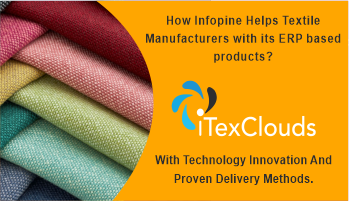10 Reasons You Must Consider Application Modernization
10 Reasons You Must Consider Application Modernization Schedule Meeting In an era where agility, efficiency, and innovation are cornerstones of success, businesses cannot afford to be hindered by outdated technology. Legacy systems may have served well in the past, but as we move towards a future driven by digital innovation, these systems pose significant limitations. Startling statistics reveal that nearly 90% of businesses fail to fully harness the true power of digital technologies. In the United States alone, this dependency on legacy applications translates to annual losses of up to USD 1.8 trillion. Such staggering figures highlight the urgent need for businesses to prioritize the modernization of their legacy applications. In this blog post, we will explore the top 10 reasons why modernizing your legacy applications is not just desirable but absolutely essential for surviving and thriving in the competitive market. Understanding Legacy Applications and Why You Should Get Rid of Them Legacy applications are software systems or applications that have been in use within an organization for a significant period of time. They are typically built on older technology stacks, outdated programming languages, and architectures that are no longer widely supported or compatible with modern systems. These applications are usually specific to a business’s needs and have been used effectively over the years. While they may continue to meet the requirements they were designed for, legacy systems often fall short when it comes to accommodating new workflows, technology integrations, or the changing demands of a digital marketplace. Some reasons why legacy apps can be detrimental for your business include: They lack the flexibility to scale and adapt to growing business needs Maintaining these applications can be expensive, consuming resources and finances They create data silos and communication barriers due to their inability to seamlessly integrate They are not equipped to handle latest cyber threats and hence are susceptible to security risks Understanding Application Modernization and How it Benefits Application modernization is a strategic process of updating or transforming outdated legacy systems to align with modern business needs and technologies. It involves various methods, from re-platforming to rewriting code, aiming to enhance application efficiency. The objective of legacy system modernization is not just to reduce costs and mitigate risks, but also to enrich user experience, facilitate integration with new technologies, and much more! The application modernization market is rapidly growing at a CAGR of 16.7% and is expected to reach USD 32.8 billion by 2027. The rapid growth of this market is only because of the numerous benefits it brings to companies. Some of the ways in which companies who have adapted application modernization benefitted include: Up to 15-35% YoY savings on infrastructure Up to 74% reduced expenditure on hardware and software Up to 14% boost in annual revenue Up to 30-50% lower application costs Up to 10% improvement in application efficiency 10 Reasons for Choosing Application Modernization By holding onto legacy applications, you may not only compromise your operational efficiency but also put yourself at a disadvantage in the rapidly evolving digital landscape. Here are 10 reasons why you must choose legacy system modernization: Complexity and Maintenance Costs Hindered Business Agility Incompatibility with New Technologies Dependency on Hardware Reduced User Experience Mitigate Security Threats High Failure Rates Scalability Accelerate Innovation Future Proofing Complexity and Maintenance Costs Legacy applications are typically built using outdated technologies and programming languages, which can make them challenging to maintain. Over time, the code structure and architecture of these applications can become obscure, further increasing their complexity. Additionally, legacy apps involve both hardware and software components, resulting in high maintenance costs. In fact, it has been found that approximately 80% of a company’s IT budget is allocated to maintaining these legacy applications. Application modernization solves this problem by breaking these complex systems into more manageable microservices. Modernizing legacy applications simplifies the codebase, making it easier to maintain and reducing the overall costs. Hindered Business Agility 65% of business owners believe that legacy applications are incapable of addressing the evolving needs of their growing businesses. Outdated software in legacy apps can hinder your business’s ability to adapt to market changes quickly. This can result in user dissatisfaction, lost opportunities, or a drop in revenue. Modernizing these applications allows businesses to incorporate new features and functionalities rapidly. This empowers them to adapt and stay competitive and meet the evolving needs of their customers. Incompatibility with New Technologies Companies worldwide are rapidly adapting different technologies to meet varying customer demands. The older technology stack of legacy applications don’t support newer frameworks, libraries, or protocols. This makes them incapable of integrating with newer, more efficient technologies, such as AI/ML, restricting a company from reaching its full potential. By modernizing these applications, you can update the underlying platforms and adopt new protocols. This makes it easier to exchange data and integrate with other systems, resulting in seamless collaboration across platforms. Dependency on Hardware In a rapidly evolving digital environment, relying on old, hardware-centric systems can hold businesses back. These systems are typically less flexible and more prone to issues, making them unsuitable for today’s fast-paced world. Hardware dependency of legacy apps can lead to increased costs, lack of scalability, and difficulties in maintenance and support. With the help of application modernization, you can leverage cloud-based solutions, which offer flexibility, scalability, and cost-efficiency. This will enable you to break free from the constraints of dedicated hardware, reduce infrastructure complexity, and leverage the benefits of modern computing environments. Reduced User Experience Today’s consumers expect intuitive, seamless experiences from applications, which legacy systems often struggle to provide. User expectations are ever-increasing, driven by innovative digital experiences offered by leading tech firms. Businesses that fail to meet these expectations risk damaging user satisfaction, retention, and potentially their market share. Through application modernization, you can adopt modern UI/UX principles, improving usability and overall user experience. This upgrade can lead to increased customer engagement and loyalty, directly impacting the bottom line. Mitigate Security Threats Older applications are frequently more susceptible to security threats as they











